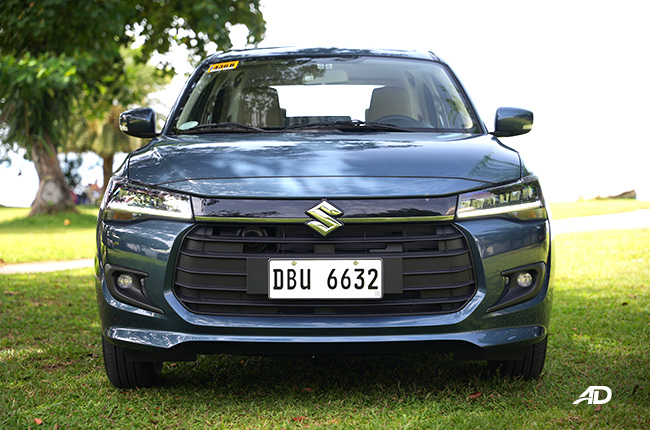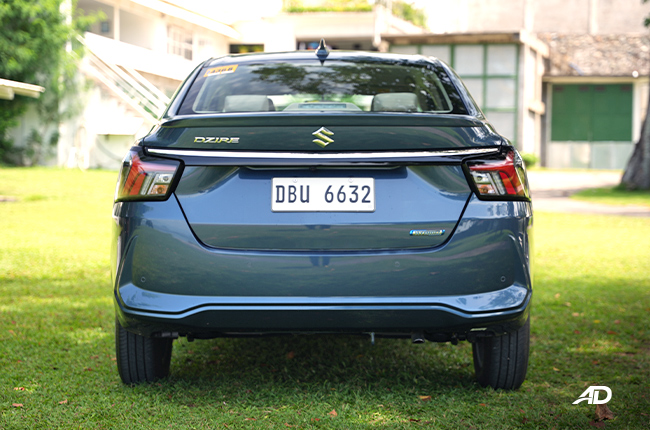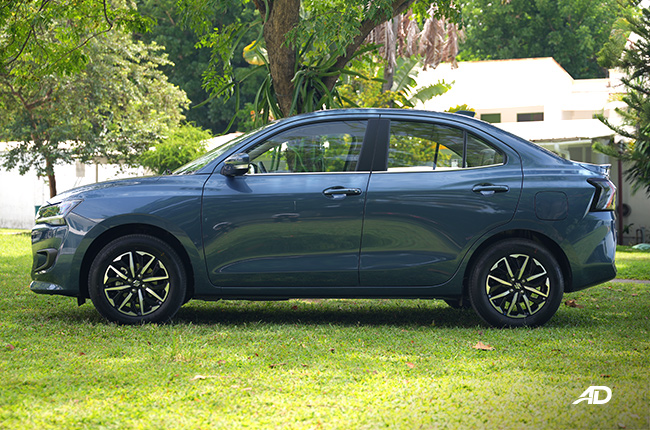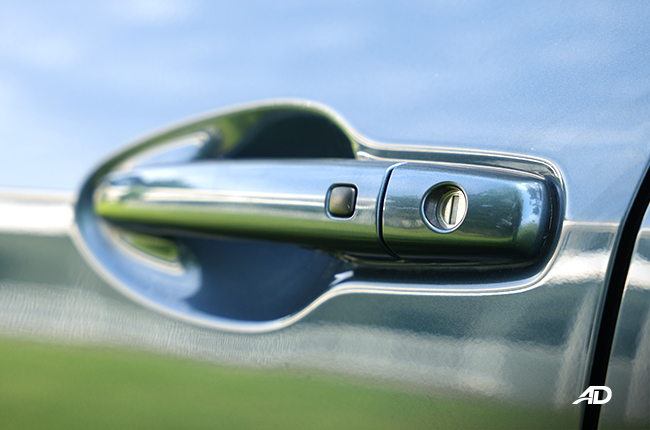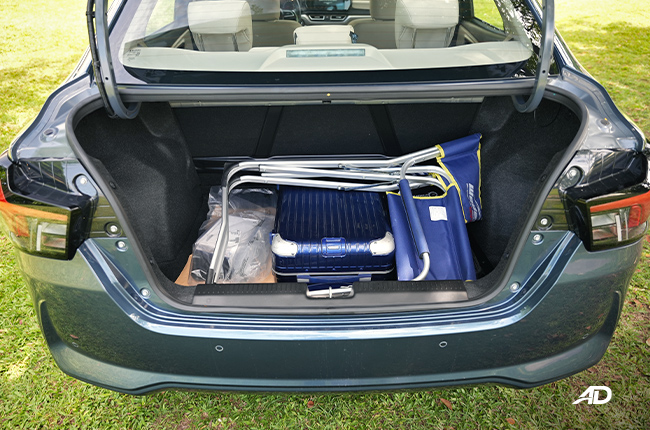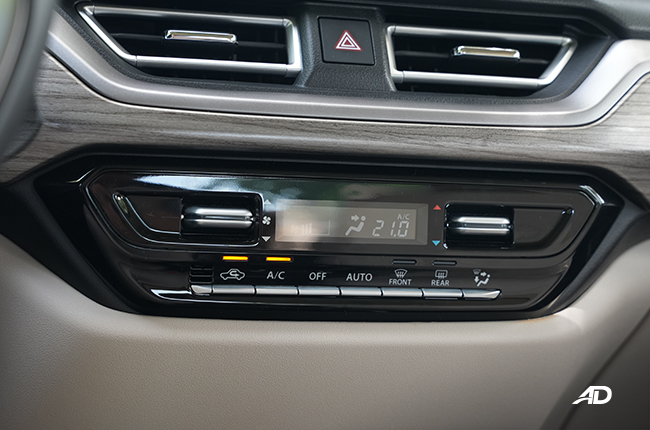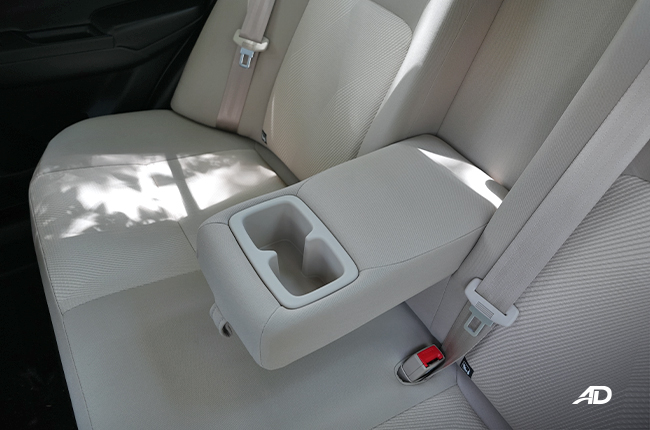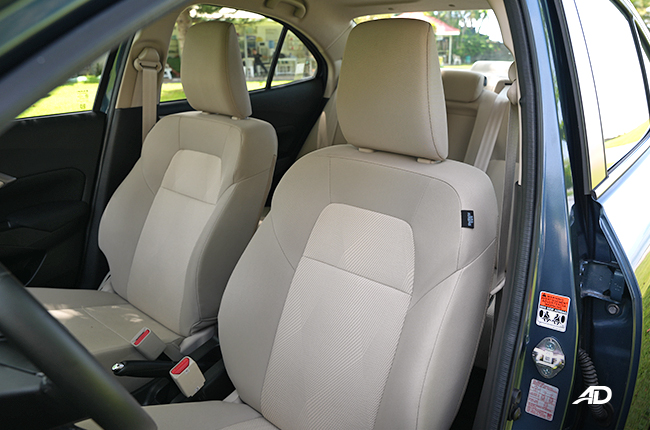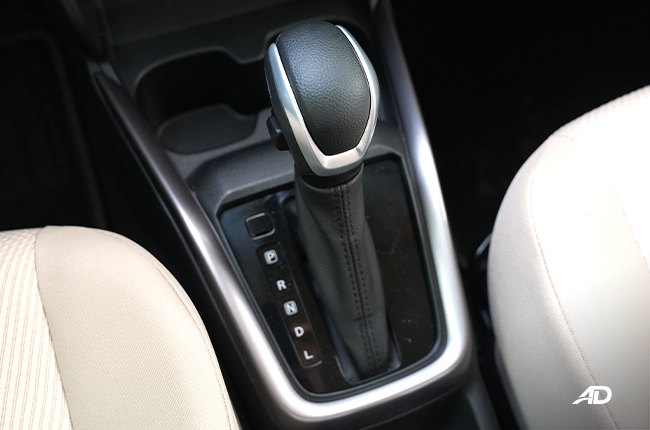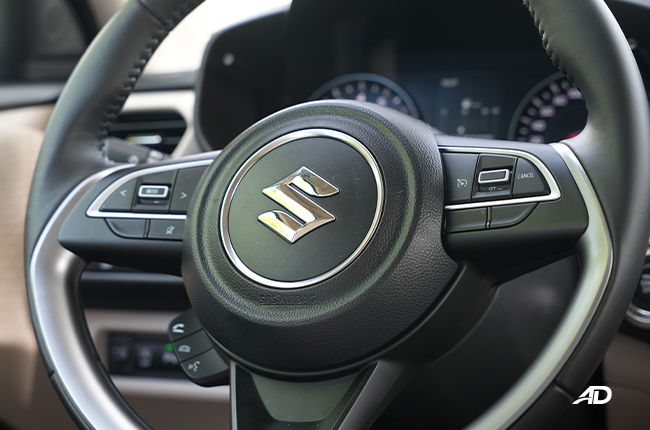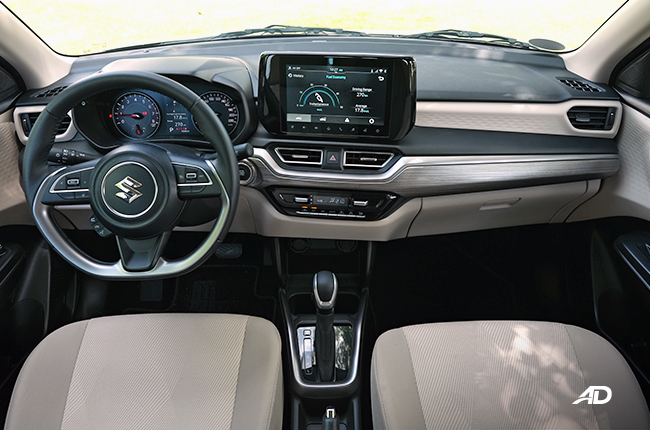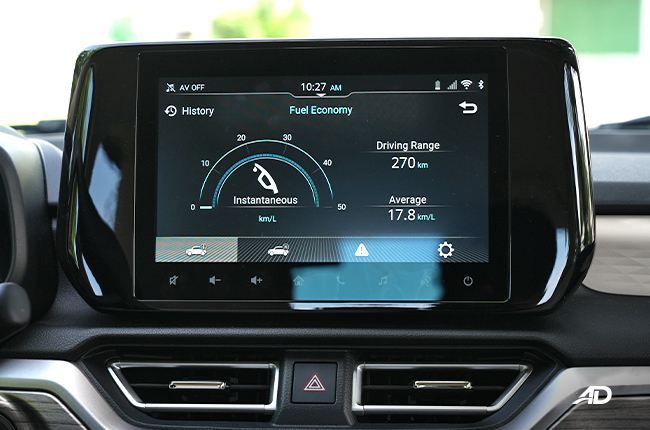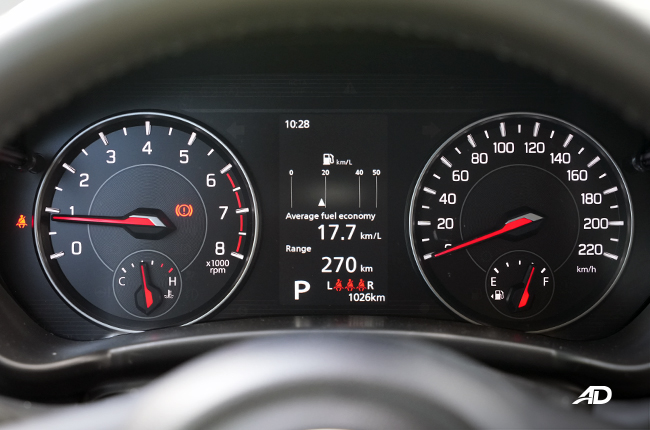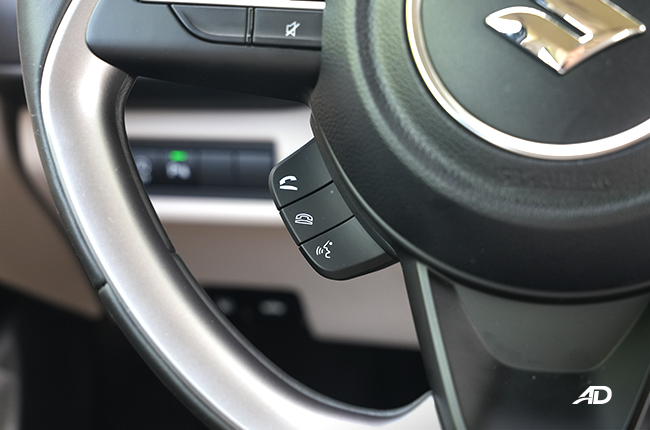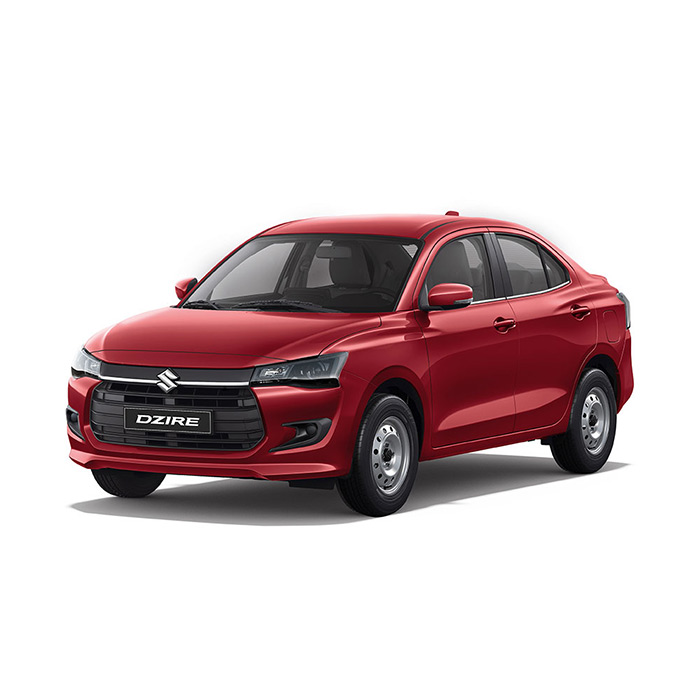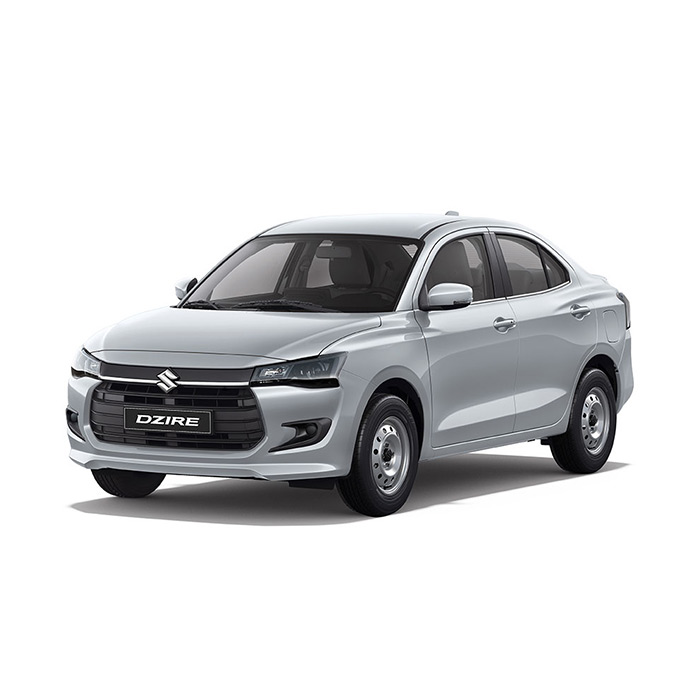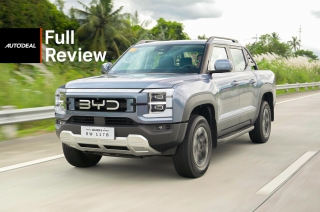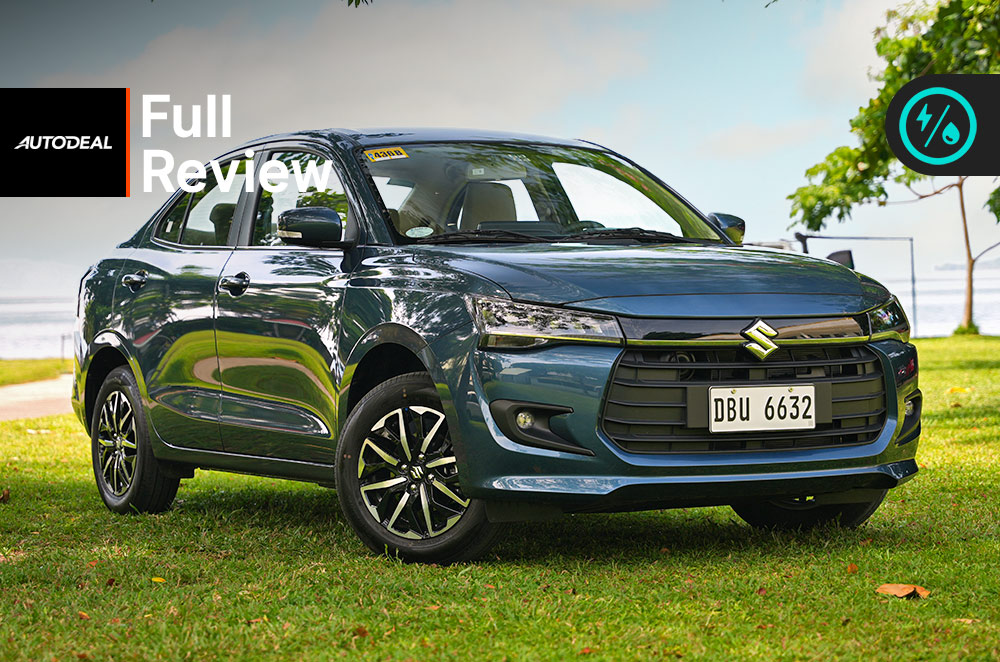
The Dzire first entered the country as the Swift Dzire in 2013 as a counterpart of the Swift hatchback. In its previous iterations, there was always a taste of the Swift about it, whether it be in the looks or its engine.
Now, with the entry of the fourth-generation Dzire, things are way different. The all-new Dzire features a fresh, sleeker design, no longer looking like a stretched-out Swift. Aside from the exterior, though, there are other changes in the hood. The new Dzire loses a cylinder but gains Suzuki’s SHVS (Smart Hybrid System by Suzuki) mild-hybrid system like the ones in the Ertiga hybrid.
Furthermore, the interior has been refined, featuring a pleasant and welcoming design that’s rare for a subcompact sedan. However, these improvements come with a price increase, which raises the question: Is the Dzire still a desirable option in today’s market? We’ll explore that in this review.
Engine Output (HP), Acceleration, Transmission, Handling 4.5/5
Exterior & Interior Design, Quality, Fit and Finish, Ergonomics 5.0/5
Cabin Comfort, Suspension, NVH Insulation 4.5/5
Convenience Technologies, Active and Passive Safety Features 4.5/5
Amount of the vehicle you get for the price, Fuel Efficiency 4.5/5
- Very frugal engine
- Steering feel is predictable and on point
- Exterior and interior feels refreshing
- No telescopic function for the steering wheel
- No speed-sensing door locks
- Can sometimes get shaky going over bumps and potholes
A fresh new look
As we’ve said earlier, the previous iterations of the Dzire had an exterior that was mostly based on the Swift. Some consider its looks as a love it or hate it thing due to the tall roof line and somewhat awkward proportions. Now, however, the Dzire looks sleeker and can stand on its own in the Suzuki lineup.
Its dimensions, 3,995 mm long, 1,735 mm wide, and 1,525 mm tall, give it a solid stance on the road, enhanced by a generous 2,450 mm wheelbase that adds to its confident presence. Up front, sharp LED headlamps and integrated daytime running lights create a bold impression, while the rear is finished with stylish LED reflector tail lamps.

The Dzire GLX we tested rolls on 15-inch polished alloy wheels, giving it a respectable 145 mm of ground clearance. Subtle chrome accents along the beltline, body-colored door handles, and a shark fin antenna complete the Dzire’s polished exterior aesthetic.
Brighter and more refined inside
Inside, the Dzire now features a brighter, more inviting cabin thanks to a new black-and-cream color scheme. Starting at the rear, passengers are greeted with cream-colored fabric seats and a handful of thoughtful amenities, including bottle holders in the doors, a center armrest with two cup holders, and rear air vents. A pleasant surprise is the inclusion of both Type-A and Type-C USB charging ports, a welcome addition in any modern car.
Legroom and headroom in the back are adequate, though accommodating a third passenger may be a bit tight due to the Dzire’s compact dimensions. Still, the rear-seat upgrades are a clear improvement and left us impressed.
Up front, the changes are more pronounced. The Dzire now boasts a completely refreshed front cabin that combines functionality with elegance. A mix of brushed metal, faux wood trim, and textured plastics elevates the interior ambiance—an impressive feat for a car in this price bracket.
The front seats come equipped with a nine-inch touchscreen infotainment system featuring wired Apple CarPlay and Android Auto, paired with four speakers and two tweeters for a fuller audio experience. Additional storage compartments are smartly placed throughout the cabin for convenience.
For the driver, there’s a traditional analog gauge cluster complemented by an LCD trip computer. A flat-bottom steering wheel with integrated controls provides easy access to audio, phone, and vehicle functions, enhancing both comfort and usability. We do wish that it had a telescopic function for the steering wheel, but it’s not a deal breaker.
Overall, Suzuki has done an excellent job refreshing the Dzire’s interior. Compared to the previous generation, the difference is night and day. The new Dzire’s cabin is simple, elegant, and undeniably attractive.
Even more fuel efficient than before?

Under the hood, the new Dzire is powered by a 1.2-liter Z12E three-cylinder engine, delivering 80 hp and 112 Nm of torque. Mated exclusively to a Continuously Variable Transmission (CVT), the Dzire aims for smooth and effortless city driving with a touch of refinement.
The small displacement engine, which already sips fuel frugally, is further enhanced by Suzuki’s SHVS mild-hybrid system. We won’t go into detail about how this system works, but Suzuki claims the new Dzire is up to 18 percent more efficient than the old one. You’ll see how efficient it is later on.
Driving performance and fuel economy
With 80 horsepower and 112 Nm of torque, the Dzire isn’t built for speed, but its power delivery is smooth and perfectly adequate for a car of its size. If you're wondering whether the hybrid system makes its presence known, the answer is no; it operates subtly in the background. The Dzire’s hybrid setup doesn’t enable electric-only driving; instead, it simply assists the engine during acceleration and cruising. The engine remains the star of the show, with the hybrid system playing a quiet supporting role.
While the new three-cylinder engine is impressively fuel-efficient, it does come with a slight trade-off in refinement. Due to the loss of a cylinder, there's a bit of vibration at idle and low speeds, but it's mild and not intrusive enough to be a real concern. Going back to fuel efficiency a bit, we managed to get 12.2 km/l inside the city and up to 23.6 km/l on the highway.
As for steering feel, Suzuki has nailed it. The steering is light and easy when navigating tight city streets or parking spaces, but it firms up nicely on the highway, offering solid feedback and boosting driver confidence. That same sense of control carries over to twisty roads, where the Dzire feels nimble and surprisingly agile.
The CVT also deserves praise. While CVTs may not match up to the responsiveness of traditional automatics with torque converters, the Dzire’s CVT can get quite close, especially if you pop it in sport mode.
Comfort
Ride comfort in the Dzire is what you'd expect for a car in its size and price range. It can feel a bit shaky over bumps and potholes, but this is likely due to its lightweight construction rather than a flaw in the suspension setup itself.
On the other hand, NVH (noise, vibration, and harshness) has notably improved over the previous generation. Where the last Dzire tended to let in a fair amount of noise, the new model does a much better job of keeping ambient sounds at bay. Both road and wind noise are well-controlled, allowing you to enjoy the GLX’s six-speaker sound system or hold conversations with your passengers in comfort.
Verdict
On its own, the Suzuki Dzire is a significant improvement over the previous generation. With a more refined interior, a more fuel-efficient engine, and a sharper exterior design, the fourth-generation Dzire represents a major step forward for the nameplate.
However, when compared to other sedans on the market, the Dzire faces an uphill battle, particularly from models like the BYD Seal 5 DM-i Dynamic, which offers more advanced technology, greater power, and a higher level of complexity. But for Suzuki, complexity isn’t the goal; simplicity is.
In an era where cars are becoming increasingly feature-packed, questions about long-term reliability and maintenance are more relevant than ever. From our perspective, simpler cars tend to have better odds of lasting longer, and in that regard, the Dzire stays true to its philosophy. If your priorities are simplicity and longevity, the Dzire Hybrid is well worth considering.
Specifications
Engine
1.2 LFuel Type
HybridPerformance
80 hp @ 5,700 rpmTransmission
CVT-
Summary
-
Name Suzuki Dzire GLX CVT Hybrid Body Type Sedan Price ₱998,000 Transmission Category CVT -
Engine
-
Engine Size 1.2 L Displacement 1,197 cc Number of Cylinders 3 Number of Valves 12 Transmission Type Continuously Variable Transmiission -
Performance
-
Drivetrain Front-Wheel Drive Max Output (hp) 80 hp @ 5,700 rpm Max Torque (nm) 112 Nm @ 4,300 rpm -
Economy & Environment
-
Fuel Type Hybrid Emissions Standard Euro 4 Fuel Capacity 37.0 L Combined Fuel Consumption n/a -
Dimensions
-
Length 3,995 mm Width 1,735 mm Height 1,525 mm Wheelbase 2,450 mm Turning Circle 10 m Ground Clearance 145 mm Trunk Capacity 378 L Number of Doors 4 Number of Seats 5 -
Safety & Security
-
Driver's Airbag 1 Front Passenger's Airbag 1 Side Airbag 2 Curtain Airbag 2 Knee Airbag Auto Brake System Electronic Brake Distribution Anti-lock Brake System (ABS) Anti-lock Brake System with Electronic Brake-force Distribution and Brake Assist
Immobilizer Security Alarm Stability Control Electronic Door Locks Speed Sensing Door Locks ISOFIX Lane Departure Warning System Blind-Spot Detection System -
Features
-
Cruise Control Front Parking Sensors Rear Parking Sensors Leather Upholstery Push Start Button Wheel Size 15 in Wheels Metal Type Alloy Airconditioning System Automatic Air Conditioning Entertainment System 9-inch Touchscreen Audio Connectivity Apple CarPlay & Android Auto, Bluetooth, USB Navigation Ready Warranty 3 Years (100,000 km) Keyless Entry Roof Rack Sunroof Electric Adjustable Seats Power Steering Power Windows Power Outlet Steering Wheel Audio Control -
Technology
-
Active Park Assist Hill Start Assist AWD Modes n/a Tire Pressure Monitoring Heads-up Display Power Liftgate Start-stop System
Colors
Latest Review
-
2026 BYD eMAX 7 Review / Review
Can the BYD eMAX 7 prove that electric MPVs work in the Philippines? With 201 hp and 530 km of range, it just might.
4.3 / 5 -
2026 Hyundai Creta N-Line Review / Review
The Creta N-Line isn’t just a Creta with sporty looks; it’s got the performance and bite to back up its style.
4.3 / 5 -
2026 BYD Shark 6 DMO Review / Review
Can a hybrid pickup truck break the mold of what pickup trucks can be? The Shark 6 DMO has something to say about that.
4.6 / 5
Popular Articles
-
Electric Vehicles in the Philippines for under P1 million
Jerome Tresvalles · Aug 19, 2025
-
Top 3 Cars For Every Lifestyle—What Cars Are Right For You? | Behind a Desk
Caco Tirona · Apr 24, 2024
-
5 Tips to Maximize Fuel Efficiency
Jerome Tresvalles · Sep 09, 2024
-
Five driving habits that are draining your fuel tank
Jerome Tresvalles · Jun 24, 2025
-
Can engine braking harm your engine?
Jerome Tresvalles · Sep 11, 2025
-
Do electric cars even need maintenance?
Jerome Tresvalles · Oct 23, 2024
-
Best vehicles for an active outdoor lifestyle
Shaynah Miranda · Jul 25, 2024
-
How to drive different types of vehicle transmissions
May 23, 2024
-
5 easy ways to keep your car interior clean
Allysa Mae Zulueta · Nov 15, 2021
-
How to survive Metro Manila traffic
Earl Lee · Aug 16, 2022


